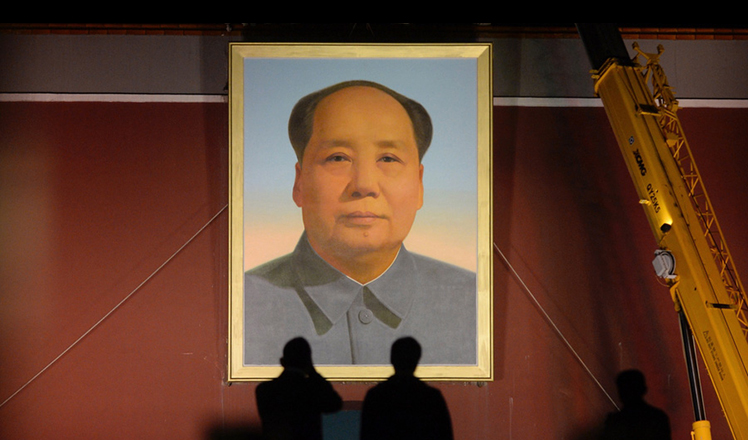Analysis of the US challenge against China's grain support policies
Updated: 2016-09-28 16:07
By Tang Zhong(chinadaily.com.cn)
|
|||||||||
II. With the practical need of safeguarding food security and livelihood for small farmers, and against the background of agriculture being exposed to injuries due to lack of tariff protection , the Chinese government has to reinforce its support for agriculture.
Agriculture in China, by its nature, is different from that in the US. This difference is, on the one hand, illustrated by small-scaled household farms in China. The average production scale of China is 0.66 ha per household, 1/400 of that of the US. Even Heilongjiang Province, with the richest land resource in China, has an average production scale of only 3.04 ha per household. The average production scale in 13 main grain-producing provinces is only 0.73 ha per household. On the other hand, the difference is that China's agriculture is subsistence in nature, and most farmers are subsistence farmers as well, out of whom a large proportion still live in poverty.
For them, agriculture is not only an important way of acquiring basic supplies for life, but also the most practical choice for employment, income raising, poverty alleviation, and development. At the same time, agriculture in China to a large extent, plays such a function as a substitute for social welfare, and shoulders the responsibility of the latter, but at the cost of sacrificing efficiency and effectiveness.
The utmost task for agriculture in China is to safeguard food security and livelihood security for millions of small farmers. In recent years, facing the impact of excessive imports, the Chinese government has to reinforce support for agriculture as its tariff plays a small role in protecting domestic production. However, China's support to agriculture is still very limited considering the large rural population. The US government claimed that China provided 100 billion dollars of support to farmers, even if we calculate with this figure, the average support for every Chinese farmer is only 161 dollars, nowhere near the support given by the US government to their farmers.
Measures taken by the Chinese government to safeguard the livelihood of small farmers are on the one hand, necessary for safeguarding food security and livelihood security; and on the other hand, an inevitable requirement for China to honor its commitment in efforts to deliver on the UN Millennium Development Goals. It has been 30 years since the reform and opening-up, China has lifted 600 million people out of poverty, accounting for 90% of the world's total. The World Bank spoke highly of China's achievement, calling it “the fastest large-scale poverty alleviation in human history”. China has made great contributions to the UN poverty reduction mission.
However, China still has 70 million impoverished people according to its own standard, and 200 million impoverished population according to the World Bank standard, most of whom are resource poor small farmers living in remote areas.
III. In view of actual trade growth, China's domestic agricultural support does not impact US large-scale commercial export
China's agricultural support is subsistence support, which mainly aims at improving farmers' livelihood. At the same time, China's agriculture bears multiple functions, to realize which efficiency is sacrificed. China's agricultural support has the distinguishing feature of compensating for the positive externality of agriculture, while the US introduces support policies for the competitiveness and commercial interests of farm owners.
In recent years, China's grain production has made some progress. The main reason, however, is that many farmers have no choice but to grow wheat, rice and maize, as soybeans and cotton they formerly grew were negatively impacted by continuous influx of imports. With regards to real market share, although production of China's three main grains has increased, the current degree of self-sufficiency has decreased to below 87%, if we take soybeans into account as a main grain following China's practice.
This clearly indicates that China has not overly stimulated grain production, China's agricultural support constitutes no obstacle to normal international trade and does not impact on US agricultural export to China. The US claimed that China's domestic support exceeded WTO accession commitments in 2012-2015. While it was during this period, China's imports from the US reached a record-high of 108.97 billion dollars, an increase of 38.53 billion dollars (up by 55%) from 70.44 billion dollars during 2008-2011. Despite slight fluctuations in 2015, the imports from the US accounted for 21% of China's total agricultural import value, with sorghum, DDGS and soybean accounts for 83.8%, 83.7%, 34.8% respectively, and for cotton and livestock, more than 10%.
IV. From the perspective of sustainability, the process of trade liberalization must take into account the need of developing members for food security and livelihood security of small farmers.
The US challenge against China's grain support policy is, in a matter of fact, the reflection of conflict between trade liberalization doctrine and real need of developing members to safeguard food security, which had once happened in the 9th WTO Ministerial Conference in 2013, where developing members and developed members had a dispute over public stockholding for food security purposes. Global cereal trade volume accounts for less than 15% of its output, more than 85% of cereal demand is met by domestic supply. The only way for developing members to have a stable food supply thereby ensuring food security is to increase investment in agriculture and food production, and support small farmers in particular, thus enhancing food production capacity. This is the reason why developing members reiterated in Doha negotiations that food security which is of paramount importance to developing members is not negotiable.
In fact, WTO has its answer to the conflict between trade liberalization and food security: food security must be fully taken into account during the process of trade liberalization, commercial interests cannot be obtained at the expense of small farmers' livelihood security and rural development need. Sufficient Special and Differential treatment must be provided to developing members, which is the underpinning principle of WTO and has been specified in Doha round negotiations. Uruguay round Agreement of Agriculture stipulates, "commitments under the reform programme should be made in an equitable way among all Members, having regard to non-trade concerns, including food security and the need to protect the environment;"
Eliminating poverty, ensuring food security and small farmers' livelihood security, are the common goals of all nations, but particularly important and arduous for China, a developing country with a huge population. Development of agricultural trade should be conducive to the attainment of those goals. Any trade liberalization ignoring China's circumstances and development is morally untenable, and is doomed to failure. Any trade growth ignoring the food security of 1.3 billion people and livelihood security of 620 million farmers is not healthy, nor sustainable.
Tang Zhong, School of agricultural economics and rural development, Renmin University of China

 Real life 'Transformer' car turns into robot
Real life 'Transformer' car turns into robot
 Israel's ex-president Peres dies at 93
Israel's ex-president Peres dies at 93
 New Mao Zedong's portrait graces Tian'anmen
New Mao Zedong's portrait graces Tian'anmen
 Clinton, Trump go head to head in high stakes presidential debate
Clinton, Trump go head to head in high stakes presidential debate
 Miniature replica of Daming Palace shows craftsmanship
Miniature replica of Daming Palace shows craftsmanship
 Elderly man creates map of China with colorful rice
Elderly man creates map of China with colorful rice
 Students 'die' to get closer to each other in Hangzhou
Students 'die' to get closer to each other in Hangzhou
 Classic autos debut at Beijing Design Week
Classic autos debut at Beijing Design Week
Most Viewed
Editor's Picks

|

|

|

|

|

|
Today's Top News
Trump outlines anti-terror plan, proposing extreme vetting for immigrants
Phelps puts spotlight on cupping
US launches airstrikes against IS targets in Libya's Sirte
Ministry slams US-Korean THAAD deployment
Two police officers shot at protest in Dallas
Abe's blame game reveals his policies failing to get results
Ending wildlife trafficking must be policy priority in Asia
Effects of supply-side reform take time to be seen
US Weekly

|

|









